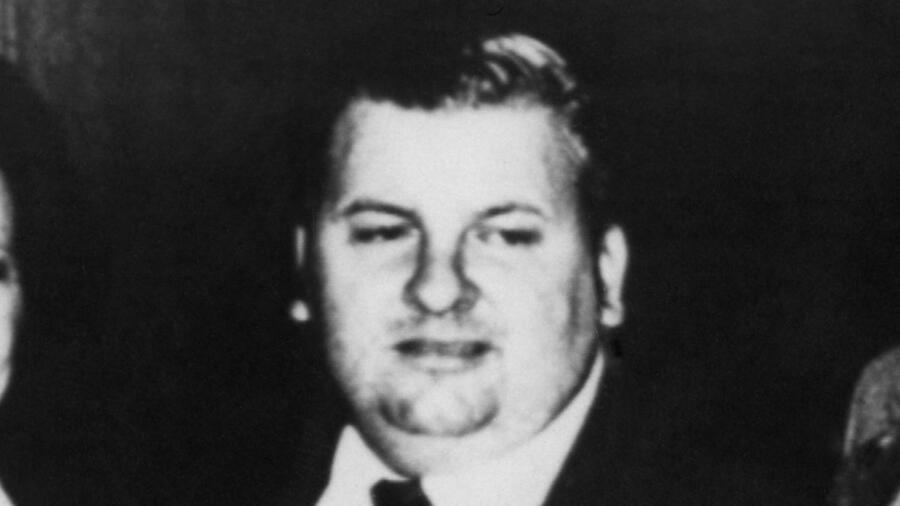Could 2023 be the year police identify another victim of deranged killer John Wayne Gacy?
The Chicago area native and serial killer known as the “Killer Clown” was executed on May 10, 1994, after murdering 33 young men and boys in the 1970s.
But Gacy’s “stain and shadow” linger with five of his victims still unidentified, Illinois’ Cook County Sheriff Tom Dart tells A&E True Crime.
Until the sheriff’s office reopened the case in 2011, there were eight unidentified victims. With help from DNA technology, forensic genetic genealogy and families—desperate to find a missing loved one—detectives have ascertained the names of three.
Currently, lead investigator Lt. Jason Moran has one lead “he’s hopeful on,” Dart says, adding the caveat, “I’m not saying it’s for sure.”
The team has experienced disappointments before. “There was one case Jason [Moran] and I would have bet our mortgages on. Everything fit—partly because the ancestry was Native American. That’s so, so unique in DNA world. [Yet] that wasn’t it,” Dart explains. Despite their efforts, it wasn’t a match.
[Stream Invisible Monsters: Serial Killers in America in the A&E app.]
Francis Wayne Alexander was the latest victim linked to the serial killer. DNA samples provided by Alexander’s siblings proved he was murdered by Gacy, the sheriff’s office announced in 2021.
“We’re just relieved that he has been found, even though it was such a tragedy in the way he was found and killed,” Richard Clyde, the victim’s half-brother told the media.
“When I walked into this thing, it was with the hope we would be able to do one. The fact that we’re three into it, and we’ve also helped identify countless other missing, deceased people is beyond my wildest expectations,” Dart says.
Escaping Gacy’s Clutches
Regular guy John Wayne Gacy was well-known in Norwood Park Township, where he worked as a construction contractor, served as a Democratic precinct captain and freelanced as a clown at kids’ parties.
At nights, however, he prowled suburban and Chicago neighborhoods, luring young men and boys to his home. There, Gacy sexually assaulted and killed multiple victims using a “rope trick” to strangle them, then concealed the bodies in his crawl space, using lime to hide the stench.
“The eerie, frightening, nagging undeniable truth was this: If you were a young man and you had a connection to John Wayne Gacy, chances were that you might turn up missing in short order,” Gacy’s attorney Sam Amirante wrote in his book, John Wayne Gacy: Defending a Monster.
Some victims escaped—most notably Jeff Rignall, whom Gacy enticed into his car in 1978. Rignall’s book, 29 Below, describes how Gacy chloroformed, raped and tortured him, then dumped him unconscious and half-naked in a Chicago park.
Chicago welder Mickel Ried briefly lived with Gacy in the early 1970s until his so-called friend ambushed him, smashing his head with a hammer.
Ried testified at the trial he grabbed Gacy’s arm to try to stop him, Amirante wrote. ”He told me that he didn’t know what came over him, but he felt like he wanted to kill me,” Ried recalled.
Gacy also solicited sex from two men in their 20s who worked for him, Art Peterson and Dominique Josczinski, the Chicago Tribune reported on December 23, 1978.
Peterson went to Gacy’s house to ask about a job in fall of 1977. The contractor revealed he was bisexual and tried to molest Peterson, who broke away, enraging Gacy.
”‘Do you know how easy it would be to get one of my guns and kill you—and how easy it would be to get rid of the body?'” Peterson recalled Gacy threatening.
The Wrong Victim
Why would a serial killer let his prey escape?
It came down to circumstances, Dart speculates. “[Gacy] was drinking a lot, and he used drugs as well. Add to that he was trying to have sex with these people. There were a lot of dynamics.
“When people got away, it was just fortuitous. I think any opportunity he had to kill, he would have done it.”
But after slaying under the radar for years, Gacy made a mistake.
“His last victim, the Piest boy, was so out of character,” Dart says.
Rob Piest, 15, had his heart set on a new car, but he needed more money than his part-time job at a pharmacy paid, prosecutor Terry Sullivan wrote in his book Killer Clown.
When contractor Gacy strolled into the pharmacy December 11, 1978, and bragged about the high wages he offered, it seemed like a stroke of luck.
Piest walked into Gacy’s house and never came out alive.
When their son didn’t return home, the Piests acted quickly. They searched their Des Plaines neighborhood for the honors student and contacted police, convincing them this wasn’t a runway teenager.
Gacy often preyed on random strangers he found while cruising. But pharmacy staff helped detectives connect the dots in Piest’s disappearance, and he quickly became the prime suspect. Gacy was arrested December 21, 1978 and confessed to dozens of murders. Authorities probed the frozen mud of Gacy’s crawl space and yard and unearthed the remains of 29 victims. They retrieved four bodies from the Des Plaines River.
‘Pathological Liar’
Cold cases fascinate Dart. After taking office in 2006, he urged his staff to find one that would benefit from new investigative technologies like DNA matching and genetic genealogy.
Investigator Moran’s response was, “How about if we go after the largest unsolved one? The Gacy case,” he recalls.
It wasn’t that authorities in the 1970s didn’t try to get the serial killer to name all his victims.
Rather, “Gacy was a pathological liar. Even when he would tell you certain things…[you were] never confident it was the truth,” says Dart.
And “with some of the victims—he had no idea who they were, even after he attacked them, even after he killed them.”
Dart, a former state legislator, met Gacy at Illinois’ Menard Correctional Center while touring the prison in the 1990s.
“He had this bizarre cell—it was like a cage, like in ‘Silence of the Lambs.’ He was obstinate, nasty [asking] ‘who are you?’ and full of expletives,” Dart recounts.
Police Still Seek Tips
Experts diverge on whether there are more than 33 victims, but Dart is convinced Gacy killed outside Illinois, citing hotel and gas receipts from other states.
Given Gacy’s boldness in murdering people on his home turf, “the notion he was relegated to one defined area, I find absurd,” Dart says.
“What sealed it for me was a phone call out of the blue…from an individual from Florida,” Dart recounts. The man said he was selling marijuana at a truck stop in Florida when Gacy pulled up and waved him over, only to pull out a gun. The man threw his wallet at Gacy and fled, unharmed.
“That guy’s ID was found in Gacy’s house,” Dart says.
The sheriff’s office is asking individuals with male relatives missing between 1970 and 1979 to call (708) 865-6244 or fill out this online form at the Cook County Sheriff’s Office website.
“That monster’s shadow is still floating around after all these years,” Dart says.
Related Features:
Who Was Timothy ‘Tim’ McCoy, John Wayne Gacy’s First Known Victim?
John Wayne Gacy’s Victims: Gone, But Not Forgotten
How Investigative Genetic Genealogy Led to the ID of a John Wayne Gacy Victim After Over 40 Years


